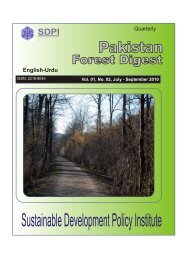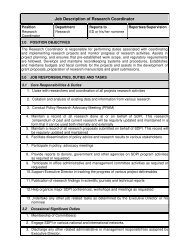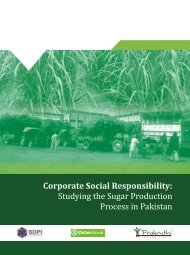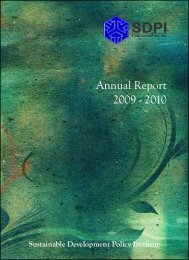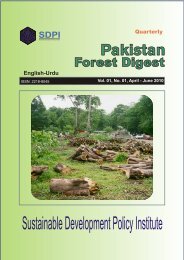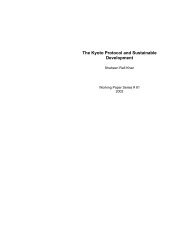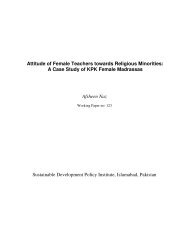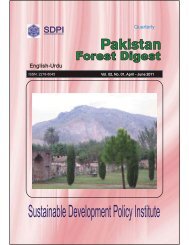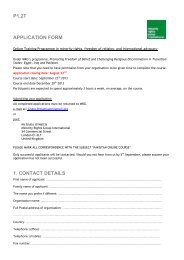Past, Present and Future 1Muhammad Asif Wazir Policy Brief # 35
Past, Present and Future 1Muhammad Asif Wazir Policy Brief # 35
Past, Present and Future 1Muhammad Asif Wazir Policy Brief # 35
Create successful ePaper yourself
Turn your PDF publications into a flip-book with our unique Google optimized e-Paper software.
growth in 2010 is due to population momentum, which will continue during the next fivedecades. This momentum would lead to further increase in the working-age (15-64) populationi.e. from 105 million in 2010 to 157 million in 2030 <strong>and</strong> 186 million in 2060 (See Table 1). Thus,Pakistan will need to adopt effective labor force policies to absorb the working age population.This large labor force, if well educated, skilled <strong>and</strong> sufficiently employed could be a key asset forthe socio-economic well-being.Owing to rapid fertility decline in the future, the proportion of population aged 65+ will acceleratefrom 7 million in 2010 to 42 million in 2060. The proportions of population aged 65+ are likely toincrease six times. This rapid population aging poses many challenges for policy makers <strong>and</strong> forinstitutional adaption, including the financing of pension <strong>and</strong> health care system for elderly. Asevident from figure 1, this large uneducated <strong>and</strong> unskilled young population along withsignificant proportion of aged population in the future would place extreme burden on economy,if not invested in education <strong>and</strong> health. Furthermore, the school age (below 14) population willbe stagnating during the next three decades (until 2030-<strong>35</strong>) i.e. approximately 61 million. Thisimplies that until 20<strong>35</strong>, more children will need to be enrolled in schools. More schools will beneeded <strong>and</strong> more teachers to be trained <strong>and</strong> hired, particularly in the rural areas. The share ofyoung population would however decline after 20<strong>35</strong> i.e. from 61 million in 20<strong>35</strong>-40 to 50 millionin 2055-60.Table 1: Population of Pakistan by broad groups from 1950 to 2060YearsPopulation (in millions)0-14 15-64 65+1950 15.1 (40%) 20.3 (54%) 2.1 (5.6%)1975 29.6 (43%) 36.0 (53%) 2.5 (4%)2010 61.3 (36%) 104.3 (61%) 6.4 (4%)2030 63.6 (28%) 154.6 (67%) 12.9 (6%)2060 54.2 (19%) 189.5 (68%) 34.7 (12%)Source: UN 2012 World Population Prospects,3


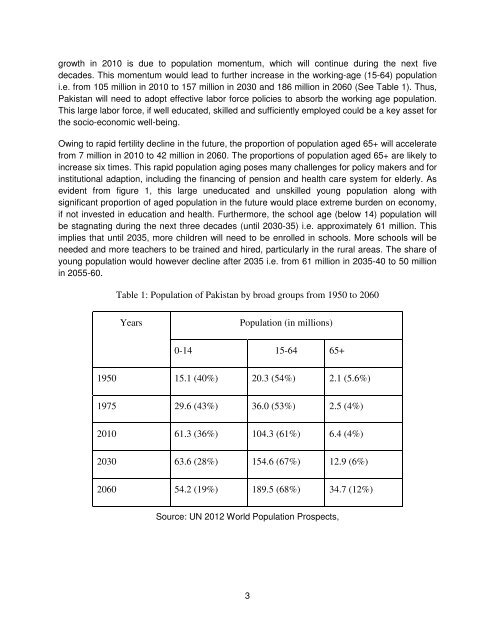
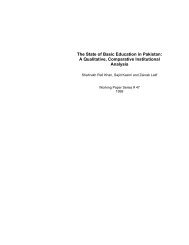
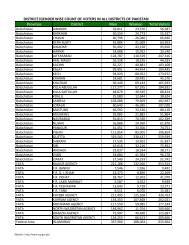
![(October - December, 2010) [13th SDC Special Bulletin]](https://img.yumpu.com/50118608/1/184x260/october-december-2010-13th-sdc-special-bulletin.jpg?quality=85)
